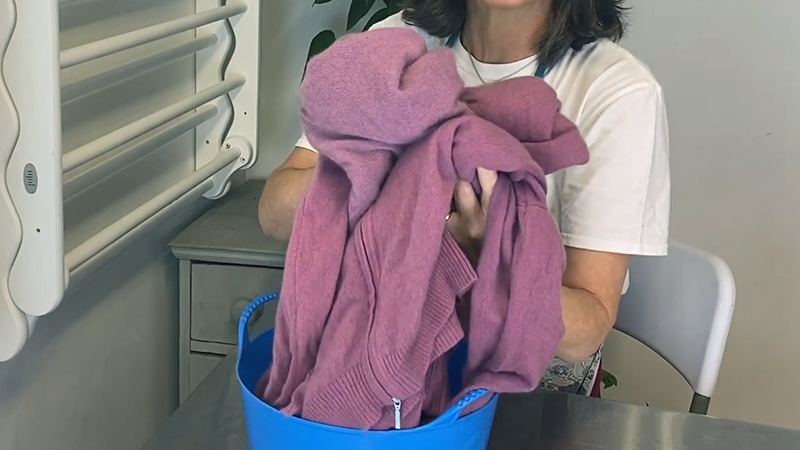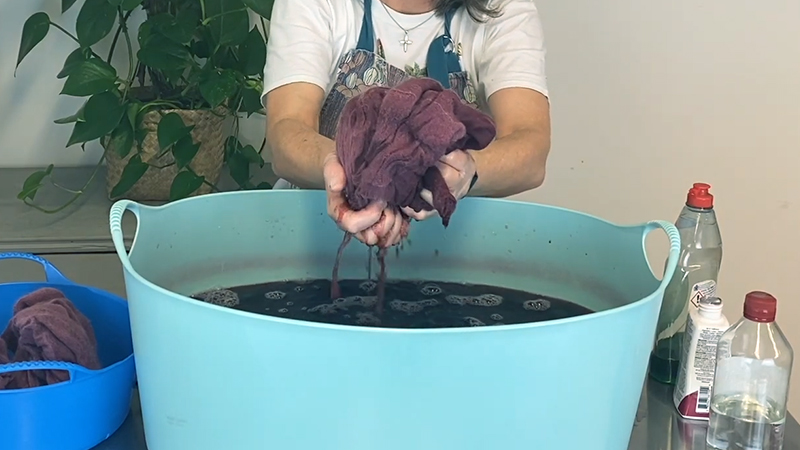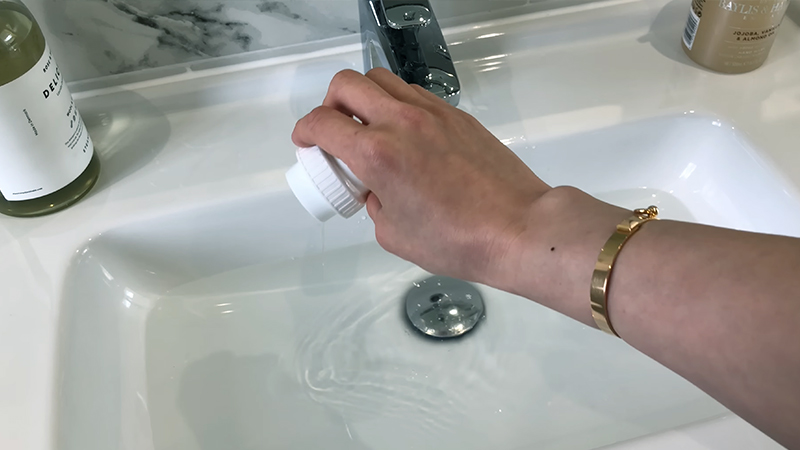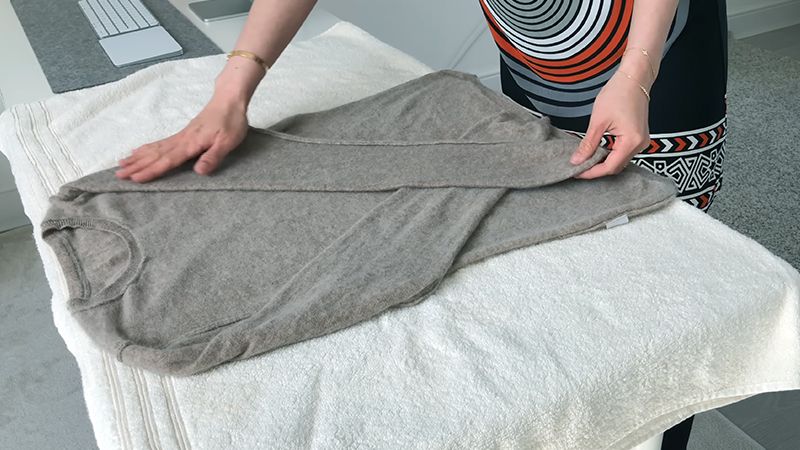Bleaching cashmere is a process that holds the promise of transforming the color of this luxurious and sought-after natural fiber.
Cashmere, known for its unparalleled softness and warmth, can undergo a dramatic metamorphosis when exposed to bleaching agents.
However, this transformation comes with its share of complexities and potential pitfalls. The delicate nature of cashmere fibers means that bleaching requires meticulous care to avoid damaging the fabric.
In this exploration, we delve into what happens when you bleach cashmere, addressing the changes in color and texture, as well as the risks and considerations that must be taken into account to preserve the integrity of this cherished textile.

What Happens When You Bleach Cashmere?
Bleaching cashmere is a delicate process that should be approached with caution. Cashmere is a luxurious and soft natural fiber obtained from the undercoat of cashmere goats. It is known for its warmth, softness, and fine texture.
However, bleaching cashmere can alter its properties and damage the fabric if not done correctly.
Here’s what happens when you bleach cashmere:
Color Change
Bleaching cashmere can lead to a significant alteration in color. The strength and type of bleach used will determine the extent of the color change. It’s noteworthy that bleach may not produce uniform results, and the color transformation may be uneven.
For example, dark colors may lighten more noticeably than lighter shades. It’s advisable to perform a color test on a small, inconspicuous area of the fabric before proceeding with the entire piece.
Texture Alteration
The texture of cashmere may undergo slight changes when bleached. The fibers can become slightly coarser or lose some of their natural softness. This can make the fabric feel less luxurious than before the bleaching process.
To mitigate this, consider using a gentle fabric conditioner during the final rinse to help restore some of the original texture.
Weakening of Fibers
Bleaching agents have the potential to weaken the fibers of cashmere. This means the fabric may be more susceptible to damage from friction, stretching, or other forms of stress.
Handling bleached cashmere with utmost care is crucial to avoid further harm. Avoid vigorous rubbing or wringing; gently pat or squeeze excess water from the fabric.
pH Levels
Bleaching agents are typically highly alkaline, which can alter the pH level of the cashmere. This change in pH can weaken the structure of the fibers and potentially lead to long-term damage if not properly neutralized and rinsed.
After the bleaching process, it’s essential to rinse the cashmere to remove all traces of bleach thoroughly. Following the rinse, use a solution of water and vinegar to neutralize the pH levels and restore the natural balance of the fabric.
Potential Discoloration
It’s essential to be aware that bleaching agents may not always produce the desired color change, and in some cases, they may cause undesirable discoloration.
For instance, certain dyes used in cashmere garments may react unpredictably with bleach, resulting in an unintended color.
Performing a color test on a small section of the fabric can help anticipate any potential issues before applying bleach to the entire piece.
Rinse Thoroughly
Thorough rinsing is crucial after bleaching to ensure that all traces of the bleach are removed. Any remaining bleach residue can continue to weaken the fibers and may lead to further damage over time.
Rinse the cashmere multiple times with cool water until the water runs clear to ensure that all bleach is wholly removed.
Conditioning
To counteract any potential loss of softness, it’s advisable to condition the cashmere after bleaching. A gentle fabric conditioner can help restore some of the fabric’s original texture.
Ensure that the conditioner is suitable for delicate fabrics and follow the manufacturer’s instructions for application.
Professional Help
Given the delicate nature of cashmere and the potential risks associated with bleaching, seeking professional help is often recommended if you are unsure about the process.
Professionals have the expertise and experience to handle delicate fabrics like cashmere and can ensure that the bleaching process is carried out safely and effectively.
Risks and Considerations

When it comes to bleaching cashmere, it’s essential to approach the process with caution and a thorough understanding of the potential risks and considerations involved.
Here are some crucial factors to bear in mind before embarking on the bleaching journey:
Fiber Sensitivity
Cashmere is known for its exquisite softness and delicate texture. However, it is also susceptible to harsh chemicals.
Bleaching agents can alter the natural structure of the cashmere fibers, potentially leading to a loss of softness and overall quality. Careful selection of bleach type and concentration is paramount to preserve the fabric’s integrity.
Color Variation
Bleaching cashmere can yield unpredictable color results. Different dye types and pigments may react differently to bleach, resulting in variations in color intensity or even unintended shades.
Conducting a small-scale color test on a discreet section of the fabric is advisable to anticipate any potential color changes before treating the entire piece.
Weakening of Fabric
Bleaching agents, particularly those with high alkaline content, can weaken the structure of cashmere fibers. This can reduce fabric strength, making it more susceptible to damage from everyday wear and tear.
When handling bleached cashmere, special care should be taken to avoid unnecessary stress on the fibers.
pH Levels and Neutralization
Bleaching agents alter the pH level of cashmere. Failing to properly neutralize the fabric after bleaching can result in a continued weakening of the fibers over time.
A thorough rinse followed by a neutralizing solution, such as water and vinegar, is crucial to restore the cashmere to its natural pH balance.
Discoloration Risk
Certain dyes used in cashmere garments may react unpredictably with bleach, potentially causing unintended discoloration.
This risk underscores the importance of conducting a color test and carefully monitoring the bleaching process to avoid unwanted alterations to the fabric’s hue.
Post-Bleaching Treatment
Following the bleaching process, restoring some of the lost softness and texture is essential. A gentle fabric conditioner during the final rinse can help replenish the cashmere’s natural feel.
However, it’s crucial to ensure the conditioner is suitable for delicate fabrics and follow the manufacturer’s instructions.
Professional Assistance
Given the intricate nature of cashmere and the potential risks associated with bleaching, seeking professional help is often a wise choice.
Experts have the knowledge and experience to navigate the process safely and effectively, ensuring the best possible outcome for your cherished cashmere garments.
Alternatives to Bleaching Cashmere

If you’re looking to refresh or change the color of your cashmere garment without the risks associated with bleaching.
There are alternative methods and considerations to explore:
Dyeing
Dyeing is a safer and more controlled way to change the color of your cashmere without the risks of bleach. Various fabric dyes are available specifically designed for use on natural fibers like cashmere.
Follow the dye manufacturer’s instructions carefully, and conduct a color test on a small, inconspicuous area of the fabric before dyeing the entire garment to ensure the desired color is achieved.
Overdyeing
When you have a cashmere garment with a color you’re not fond of, consider overdyeing it with a darker or more desirable color.
Overdyeing is a process that involves applying a new color over the existing one. Remember that the original color will influence the final result, so choose your overdye color accordingly.
Natural Dyeing
Natural dyes derived from plants, roots, and insects can be used to change the color of cashmere naturally. While this method is generally gentler than chemical dyes, it may not provide as vivid or predictable results.
Natural dyeing can be an eco-friendly option for those looking to experiment with color while maintaining the integrity of the fabric.
Fabric Paints and Markers
Fabric paints and markers creatively add patterns or designs to your cashmere garment without altering its color entirely.
These products allow you to personalize your cashmere while avoiding the potential risks of bleach or dye.
Always follow the instructions on the fabric paint or markers to ensure a lasting and professional-looking result.
Color-Enhancing Products
Color-enhancing products are available and designed explicitly to rejuvenate cashmere color and other natural fibers.
These products are not designed to change the color but can help restore the vibrancy of faded cashmere items. Always follow the product instructions and perform a spot test if necessary.
Professional Dye Services
When unsure about dyeing your cashmere at home, consider taking your garment to a professional fabric dyeing service.
They have the expertise to achieve the desired color changes while minimizing the risks of damage to the fabric.
Accessories and Layering
To change the look of your cashmere without altering the garment itself, consider accessorizing with scarves, shawls, or vests in different colors or patterns.
Layering allows you to experiment with different looks while preserving the original cashmere piece.
Caring for Cashmere Garments

Caring for cashmere garments is essential to preserve their softness, shape, and longevity.
Cashmere is a delicate and luxurious natural fiber; proper care ensures it remains in excellent condition.
Here are the key steps and considerations for caring for your cashmere garments:
Read the Care Label
Always begin by carefully examining the care label attached to your cashmere garment. The label provides valuable information about the manufacturer’s recommended care instructions.
It specifies whether the garment should be hand-washed, machine-washed, or dry-cleaned or if there are any specific precautions to take.
Hand Washing
- Hand washing is the most delicate method for cleaning cashmere, ensuring minimal stress on the fibers.
- When hand washing, choose a basin or sink that is spacious enough for the garment to move freely. Use lukewarm water and a mild detergent specifically formulated for delicate fabrics. Gently agitate the water to create suds, then submerge the cashmere item.
- Allow it to soak for 5-10 minutes before rinsing thoroughly with cool water. To remove excess water, gently squeeze the garment without wringing it. Reshape it to its original dimensions and lay it flat on a clean towel to air dry.
Machine Washing
- Some cashmere garments are labeled machine washable, providing a convenient cleaning option.
- When machine washing, use a gentle cycle, cold water, and a mild detergent explicitly designed for wool or cashmere. Place the cashmere item inside a mesh laundry bag to provide extra protection during the wash.
- Once the cycle is complete, promptly remove and reshape the item before laying it flat to air dry.
Dry Cleaning
- Dry cleaning is a reliable option for cashmere if the label suggests it, as professionals are skilled in handling delicate fabrics.
- Take the cashmere garment to a reputable dry cleaner with experience handling delicate fabrics. Communicate any specific stains or areas that require special attention.
Avoid Excessive Washing
Cashmere does not require frequent washing. Overwashing can strip the fibers of their natural oils, leading to a loss of softness and luster. Reserve washing for instances when the garment is noticeably soiled or develops odors.
Storage
- Clean Before Storage: Ensure that cashmere items are thoroughly clean and scorched. Any residual moisture can create an environment conducive to mold or mildew growth.
- Fold, Don’t Hang: Fold cashmere garments to prevent stretching. Hanging can cause the fabric to lose its shape over time.
- Use Storage Bags: Consider using breathable garment storage bags to safeguard your cashmere from dust and potential pests.
Pilling
While cashmere is known for its softness, it is also prone to pilling. Pilling refers to forming tiny, fuzzy balls of fibers on the surface, particularly in high-friction areas. You can gently remove these pills using a cashmere comb or a fabric shaver.
Avoid Direct Sunlight and Heat
Store cashmere in a location away from direct sunlight and heat sources. Prolonged exposure to these elements can cause fading and weaken the fabric over time.
Moth Protection
Cashmere is a favored target for moths. Use natural moth repellents like cedar balls, lavender sachets, or eucalyptus leaves in your storage area to deter these pests and protect your garments.
Repair
If your cashmere garment sustains any damage, such as a small hole or a loose thread, consider getting it repaired promptly.
Addressing such issues early can prevent further damage and prolong the lifespan of your cherished cashmere piece.
FAQs
Can I bleach cashmere to change its color?
Yes, bleaching cashmere can alter its color. However, it’s important to note that the results may vary, and the process requires careful attention to prevent damage to the fabric.
Does bleaching cashmere affect its texture?
Yes, bleaching can potentially alter the texture of cashmere. The fibers may become slightly coarser, and the fabric may lose some natural softness.
Are there risks associated with bleaching cashmere?
Yes, there are risks. Bleaching agents can weaken the fibers and alter the pH level of the fabric, potentially leading to long-term damage if not done correctly.
Can bleaching cashmere cause discoloration?
Yes, bleaching agents may not always produce the desired color change and can sometimes lead to unintended discoloration.
How should I care for bleached cashmere after the process?
After bleaching, it’s crucial to rinse the cashmere to remove all traces of bleach thoroughly.
Wrap Up
Bleaching cashmere is a delicate process with both transformative potential and inherent risks. While it can alter the color and texture of the fabric, it requires careful execution to avoid damaging the delicate fibers.
Discoloration and pH imbalance are possible outcomes, emphasizing the importance of a meticulous rinsing and neutralizing process.
Additionally, professional assistance or alternative methods like dyeing may be safer options for those uncertain about bleaching.
Ultimately, understanding the nuances of bleaching cashmere and approaching it with care can lead to successful results, ensuring the fabric retains its luxurious quality for years.
Leave a Reply